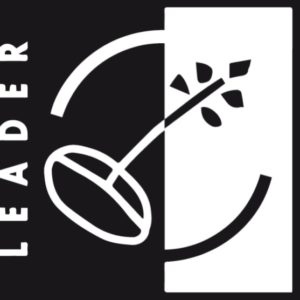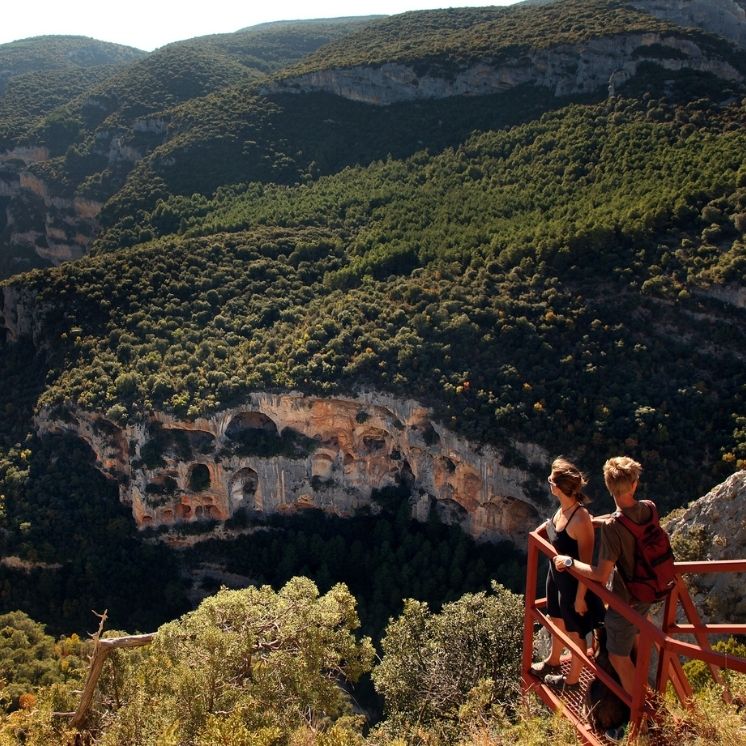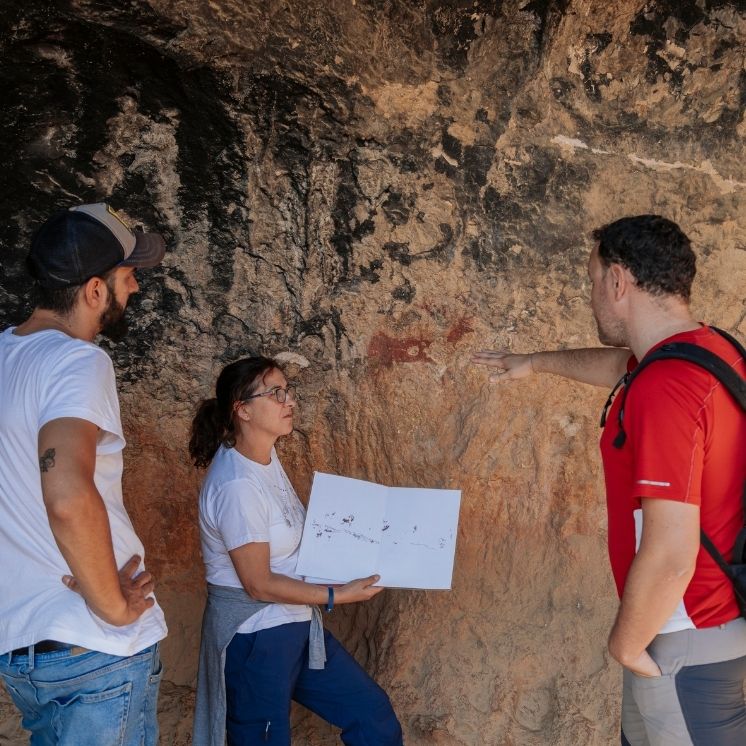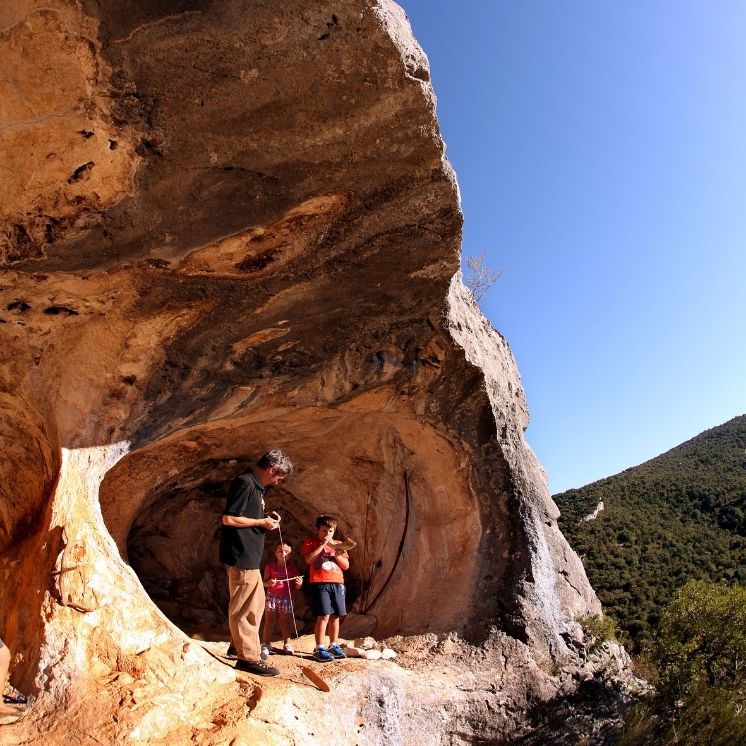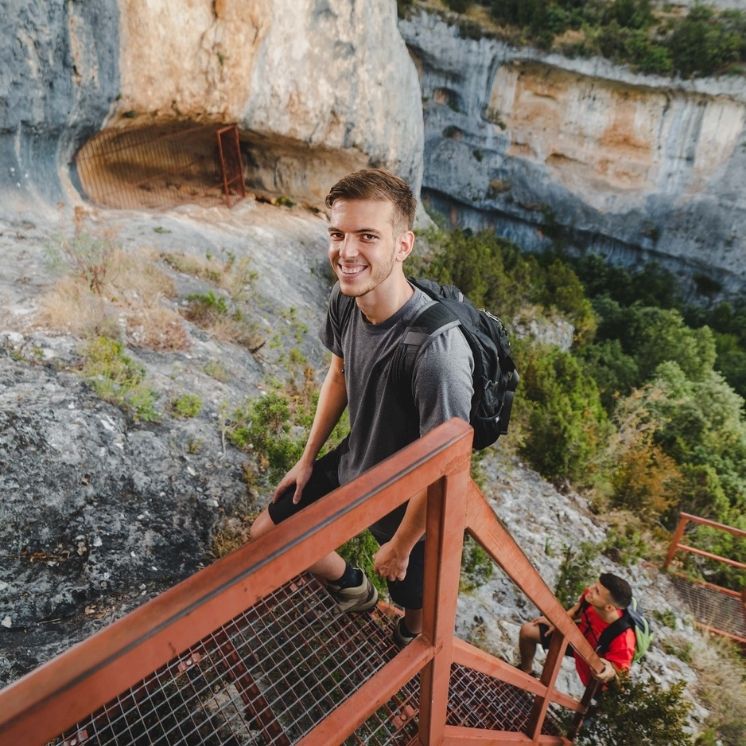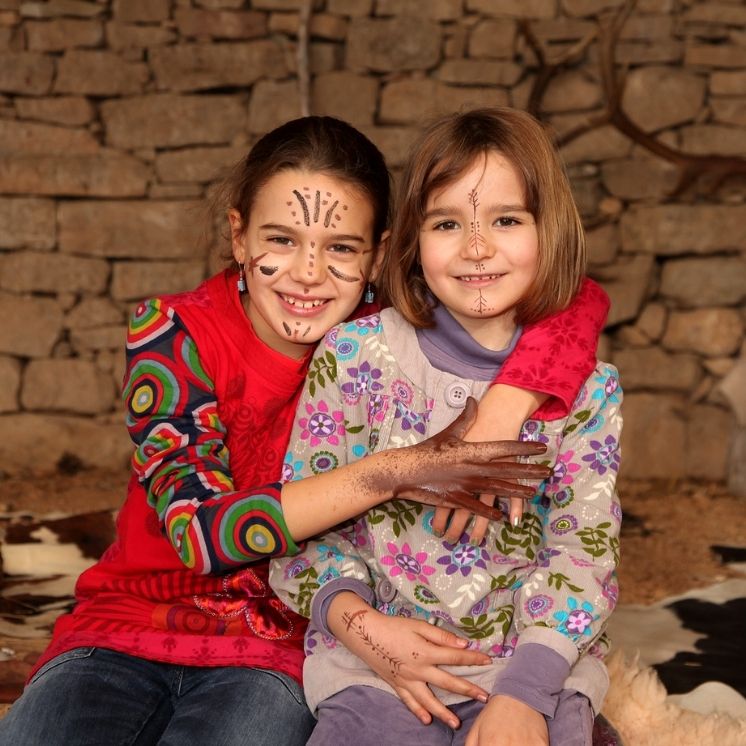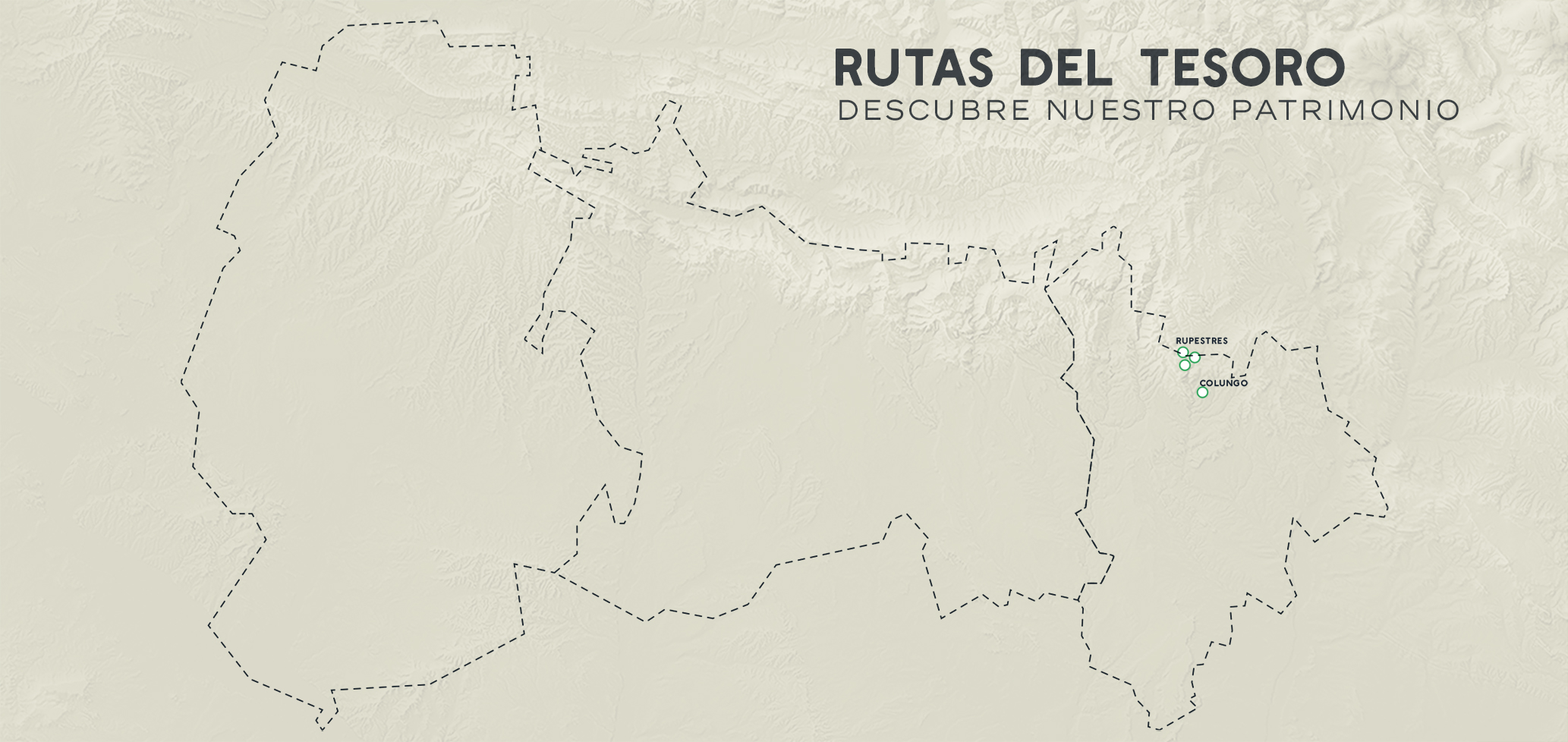MYSTERIES OF PREHISTORY
This is an area known and frequented by trekkers and adventure lovers, which also offers a fascinating cultural past: cave paintings made by our prehistoric ancestors that are designated UNESCO World Heritage sites.
At each of the stops on this trip, there is a hidden treasure. To locate it, we provide you with coordinates and a series of clues. We recommend that you download the free application available from https://www.geocaching.com/play There you find all our geo-located treasures and clues.
PREHISTORIC ART
In the shelters and caves belonging to the Vero River Cultural Park, Mallata, Barfaluy, Arpan, Chimiachas, the Fuente del Trucho and Lecina Superior, etc., in a fairly small area, these three classical styles of prehistoric art are concentrated. This is unique in the Iberian Peninsula and shows the importance of the Aragonese Rock Art.In 1978 the cave called Fuente del Trucho was discovered in Asque-Colungo (Huesca), which was inhabited 30,000 years ago and in which there are remains of petroglyphs and pictographs, the oldest ever found in Aragon. The discovery confirmed the existence of Paleolithic Art in Aragon, which until then had only been attributed to the caves of the Cantabrian coastal region. Sadly, this cave is not visitable for now.Along with the Cantabrian Rock Art, Aragon preserves important examples of Levantine (the Iberian Mediterranean Basin) Rock Art. The Levantine style is an eminently pictographic style of art developed in caves and shelters inhabited between 6,000 and 4,000 BC. The artists used different techniques, including the filling in of figures with plant-based pigments. They used the basic colours of red, black and white. It is characterized, above all, by pictographs depicting scenes of animals and humans in ritual acts, hunting, dance, war, etc. You will find it in the shelters of Chimiachas in Alquézar, and Arpán in Colungo (Huesca).Schematic art is more abstract in nature. It was developed between 5,000 and 3,000 BC, by agricultural societies from between the Neolithic and the Bronze Age. You’ll see their figures in shelters and caves like the one at Mallata in ColungoMAP OF THE ROUTES
DOWNLOADABLE MAP AND ROUTES
COLUNGO: ROCK ART CENTER
The best way to start the journey through Prehistory is to visit the Rock Art Center, as it will open the door to this mysterious and ancient world. From here, guided visits to the shelters with cave paintings at Arpan, Mallata, Barfaluy and Lecina Superior.
Mallata and Barfaluy are caves with schematic rock art; that is, the figures are represented with basic markings, in a very linear way. The chronology of this style includes the Neolithic, the Bronze Age and some samples from the Iron Age.
However, at Arpan, there are paintings that also correspond to the Levantine style of rock art. It is characterized by the representation of dynamic scenes where one or several figures perform an action: hunting, ritual dances, battles or daily life.
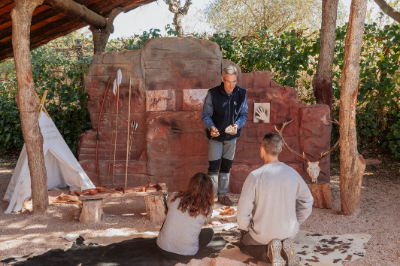
LOCATION
HOURS
THE COLUNGO TREASURE
LOCATION
HOURS
Check the schedules on the Tourism Somontano page
THE COLUNGO TREASURE
COORDINATES
You will find the treasure at the following coordinates: 42°10’21.9″N 0°04’00.0″E
Hint: Find small embrasures or slots
Placed by:
Clandestine Pre-Pyrenees
ROCK SHELTER OF BARFALUY
In the shelters of Barfaluy 1, 2 and 3, we find different figures with human form, animals, group scenes and goats. In Barfaluy 1 and 2 they used red pigment, while in Barfaluy 3 they used black. The red pigment was obtained by crushing ochre and mixing it with water and a binder.
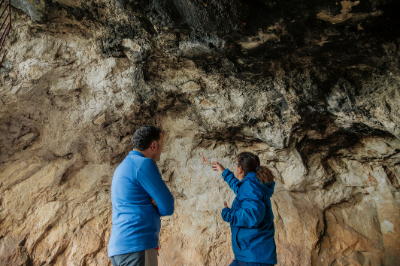
LOCATION
BARFALUY TREASURE
LOCATION
BARFALUY TREASURE
COORDINATES
You will find the treasure at the following coordinates: 42°12’56.7″N 0°01’47.0″E
Hint: On top of the Arnales.
Placed by: Clandestine Pre-Pyrenees
TOZAL DE MALLATA. MALLATA CAVES
The Tozal de Mallata is a great precipice – a cliff hundreds of metres high. Its inaccessibility kept the paintings hidden until a few years ago. In these caves you can see several scenes painted in red pigment. Animals and anthropomorphic figures share the action, possibly part of a ritual. These paintings were made by human groups of farmers and herders in the Neolithic and the Bronze Ages. The images indicate that possibly the surroundings of the Vero were a place of worship, a primitive temple where, perhaps, magic was invoked.
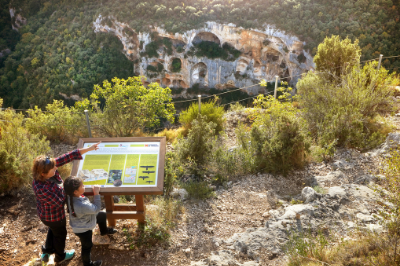
LOCATION
THE MALLATA TREASURE
LOCATION
THE MALLATA TREASURE
COORDINATES
You will find the treasure at the following coordinates: 42.215517, 0.039683
Hint: To access the treasure, you can park your vehicle in a car park called Barranco Portiacha (42.2155207.0.0374946), very close to the lookout point. You will find the treasure just a few metres away. To see it you will have to lift some stones.
Placed by: TuHuesca
CAVE PAINTINGS OF ARPÁN
Here some of the figures are different from those we saw in Barfaluy and Mallata. That is because here there are Levantine-style paintings. Animals and anthropomorphic beings are no longer so schematic or so basic, and they have more realistic proportions.
This cave shelter is around six meters deep. The ochre paintings are distributed in four panels and are typical of the Mediterranean area of the Iberian Peninsula – Levantine Art.
Near this rock shelter are those of Fuente del Trucho, Chimiachas and Regacens, which are not visitable, although they have access roads that are highly recommended.
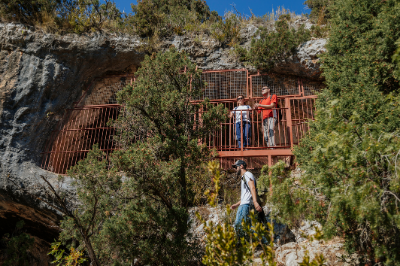
LOCATION
THE ARPÁN TREASURE
LOCATION
THE ARPÁN TREASURE
COORDINATES
You will find the treasure at the following coordinates: 42°12’53.9″N 0°01’19.2″E
Hint: At the foot of the red closure.
Placed by:
Clandestine Pre-Pyrenees
ROCK SHELTER OF UPPER LECINA
The Upper Lecina shelter is suspended on a cliff. It is located 740 meters above ground level. But how did the dwellers get there? Do not tax your brain – we can get there by following a path from Lecina. It is a hiking route.
In this shelter, you can see paintings of the schematic style in red and black. You will see a scene of men hunting animals. At the Interpretation Center of Colungo, you can organize a guided tour of these paintings.
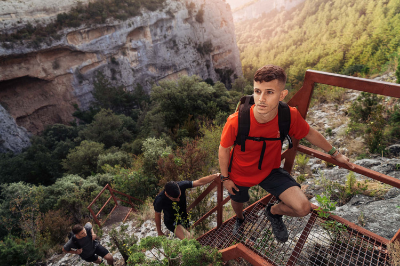
LOCATION
THE LECINA TREASURE
LOCATION
THE LECINA TREASURE
COORDINATES
You will find the treasure at the following coordinates: 42°13’00.1″N 0°02’00.3″E
Hint: At the end of the ladder Placed by:
Clandestine Pre-Pyrenees

